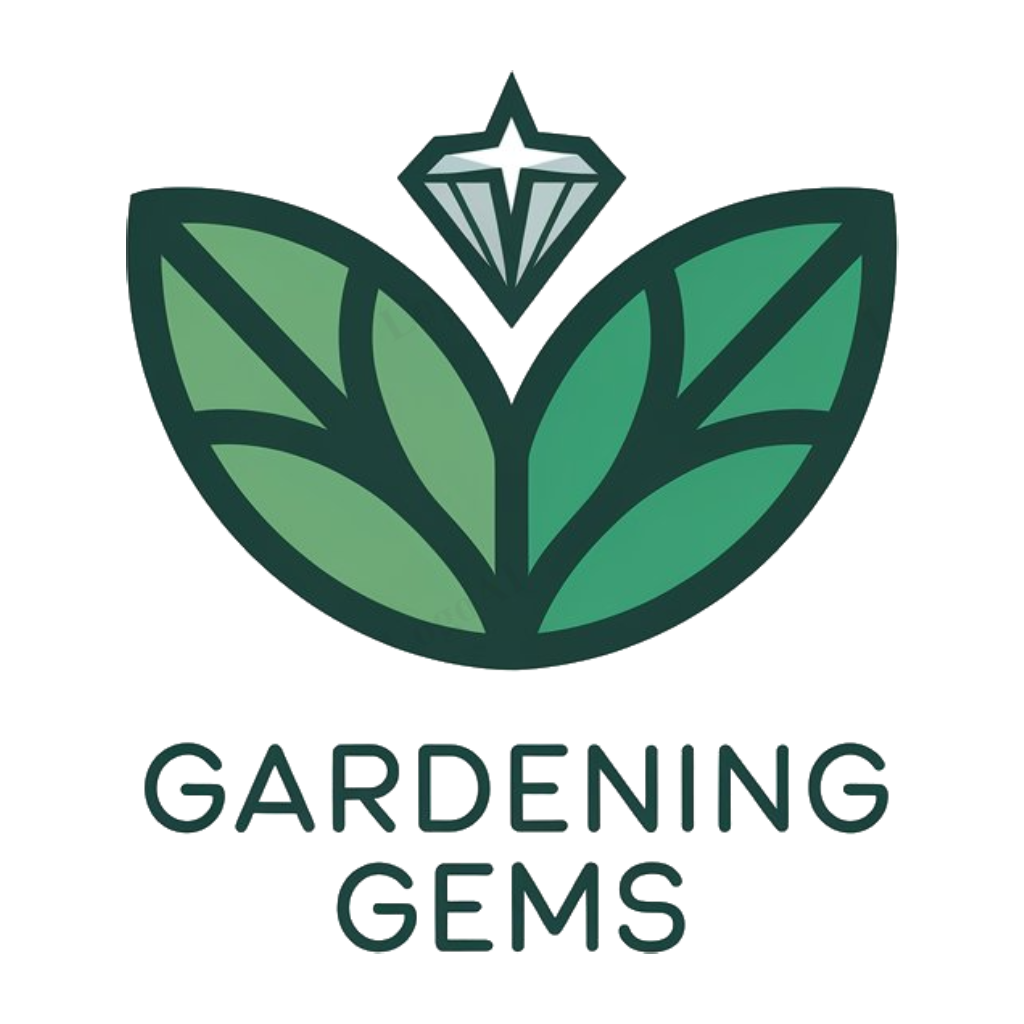Getting started with potting plants is an exciting adventure. You’ll spend countless hours perfecting your potting skills, and it’s great that you’re taking the first step by learning about it. Now, you’ll discover the essentials to get started and become a pro at growing happy and healthy plants.
Learning about potting plants is easy and fun, and with these helpful tips, you’ll be on your way to creating a beautiful garden in no time. You’ll get to know the best ways to choose the right plants, soil, and pots for your garden. By following these simple tips, you’ll be enjoying your lovely plants in just a few weeks.
Choosing the Right Potting Soil
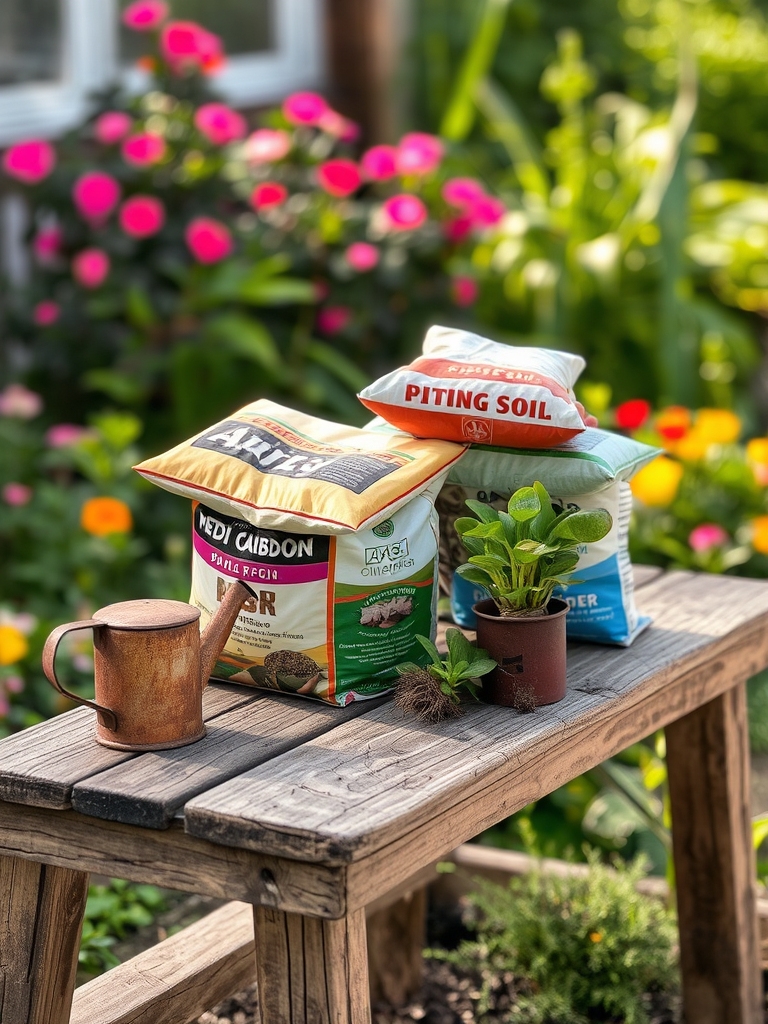
Choosing the right potting soil is essential for plant growth. Select a mix that suits your plant’s needs, considering factors like drainage, pH level, and nutrient content. Avoid using garden soil, as it can compact and prevent proper root growth. Instead, opt for a well-balanced potting mix that retains moisture and allows for healthy root development.
Selecting the Perfect Pot
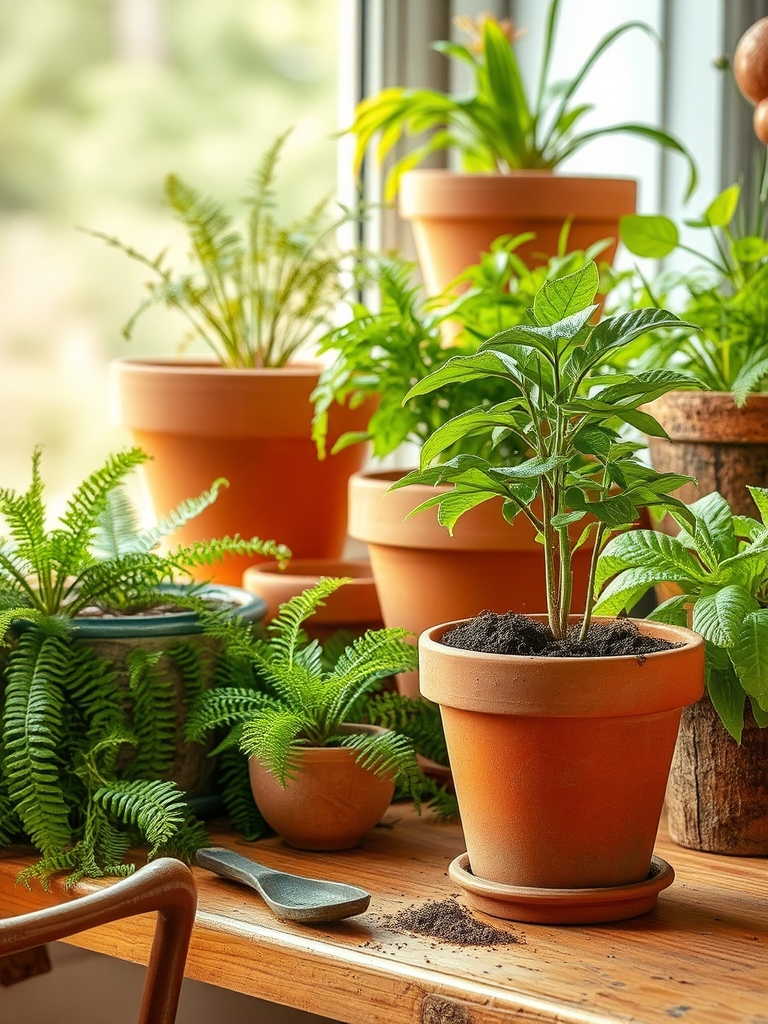
When selecting the perfect pot, consider the plant’s size, growth habits, and drainage needs. Choose a pot that is slightly larger than the plant’s root ball to allow for growth. Guarantee the pot has drainage holes to prevent waterlogged soil and root rot. Material and style should also complement the plant and its surroundings.
Understanding Your Plant’s Watering Needs
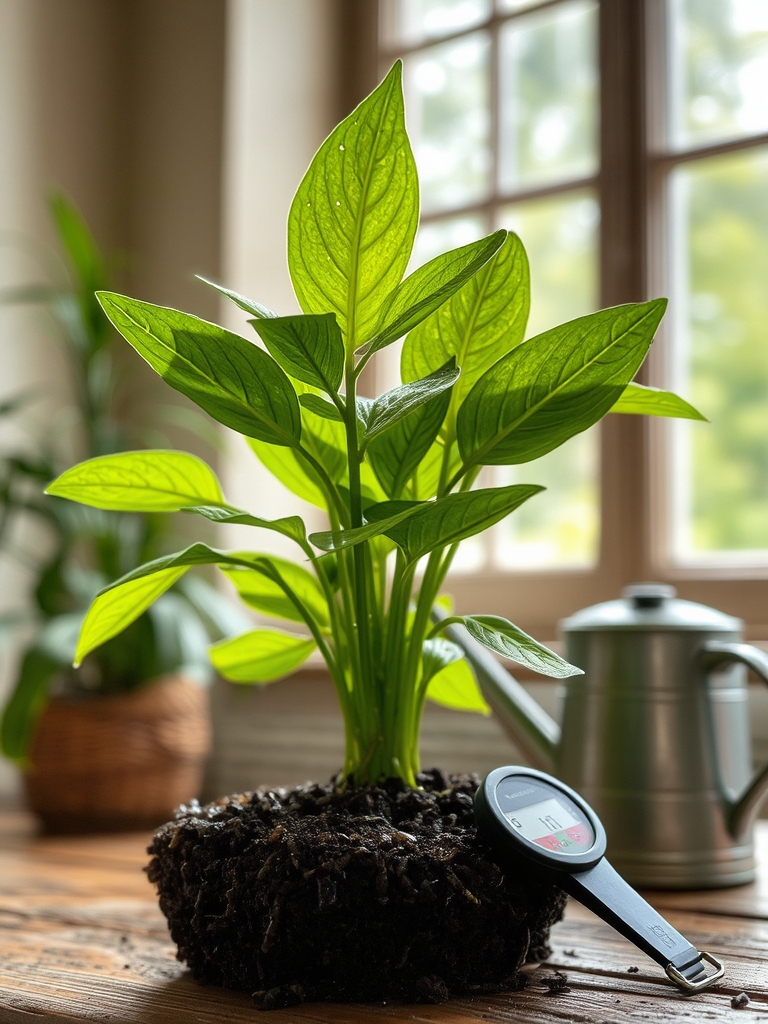
Understanding your plant’s watering needs is vital for its survival. Different plants have unique watering requirements, depending on factors like climate, soil type, and sunlight exposure. Overwatering or underwatering can be detrimental, so being aware of your plant’s specific needs is necessary to provide the right amount of moisture.
Providing the Right Amount of Light
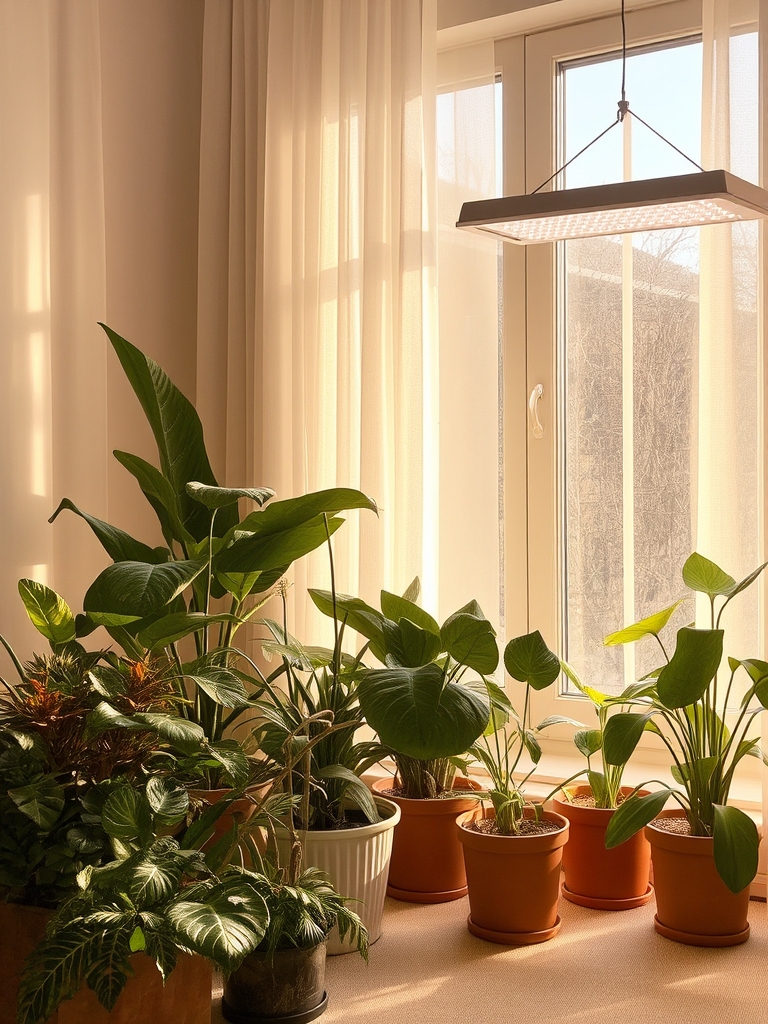
Providing the right amount of light for your potted plants is vital for their growth and survival. Different plants require varying levels of light, ranging from low to full sun. Place plants near a sunny window or use grow lights to supplement natural light, ensuring the ideal amount of light for each species to thrive.
Maintaining Optimal Temperatures
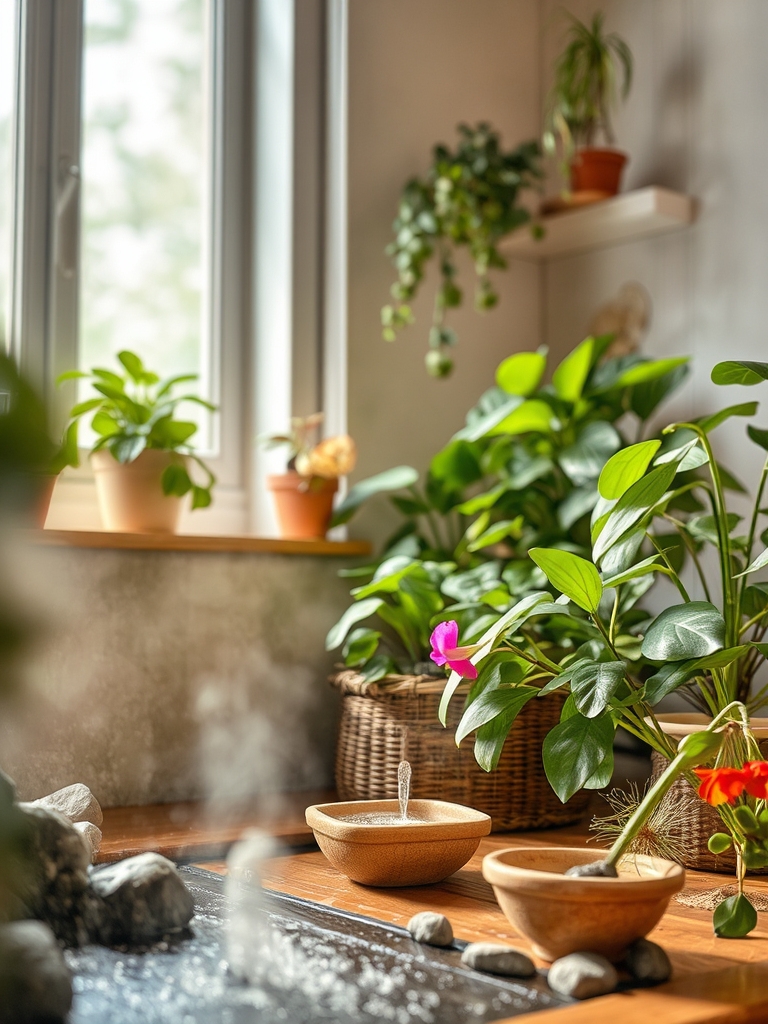
Maintaining ideal temperatures is vital for healthy plant growth. Most plants thrive in temperatures between 65-75°F (18-24°C), while some require warmer or cooler conditions. Checking the specific temperature needs of your plants and placing them in suitable locations can help prevent stress and promote robust growth. Regular monitoring guarantees perfect conditions.
Humidity Levels for Happy Plants
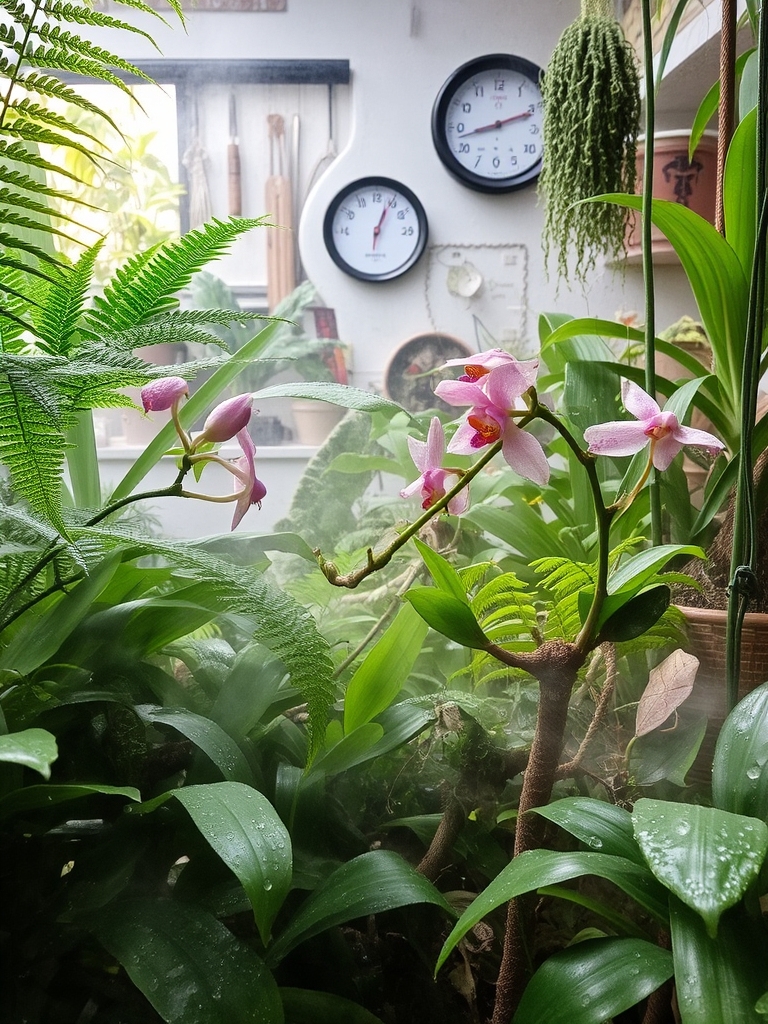
Maintaining ideal humidity levels is vital for happy plants. Most plants thrive in humidity levels between 40-60%. Some plants, like ferns and orchids, require higher humidity, while cacti and succulents prefer drier conditions. Monitoring and adjusting humidity levels can help prevent issues like root rot and leaf drop, ensuring healthy plant growth.
Pruning and Trimming Techniques
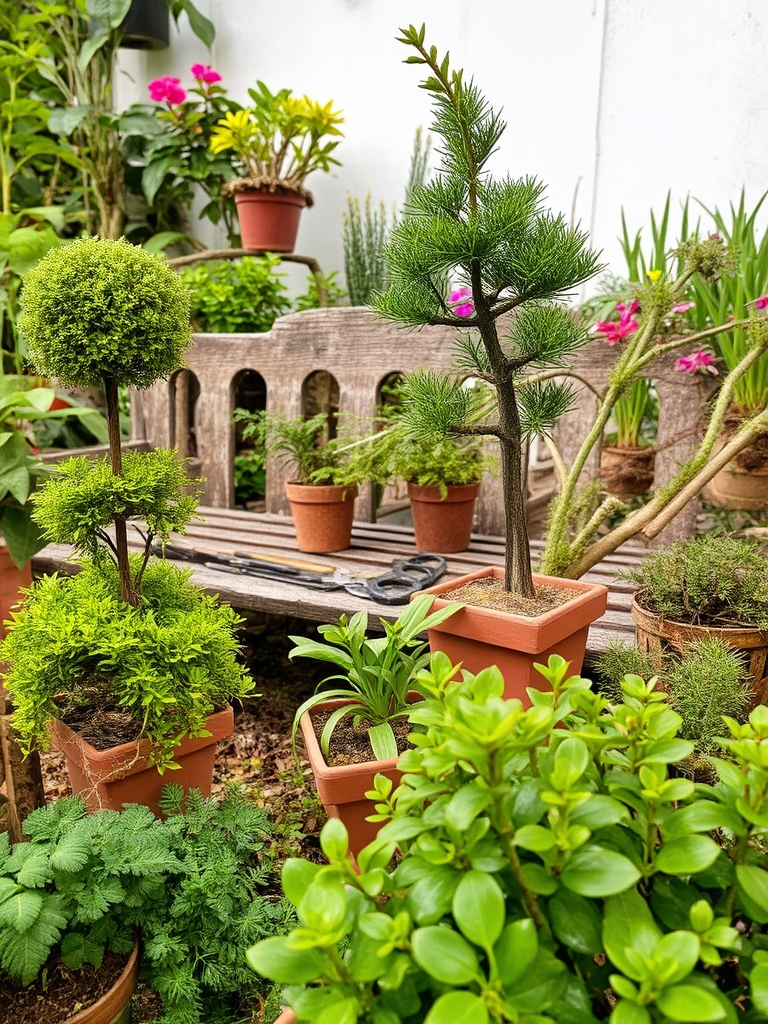
Pruning and trimming techniques are vital for maintaining plant health and promoting growth. Regular pruning helps control shape, removes dead or damaged leaves, and encourages new growth. Trimming techniques vary depending on plant type, with some requiring frequent trimming to maintain appearance and others needing less frequent pruning to avoid damaging the plant.
Repotting Your Plants Successfully
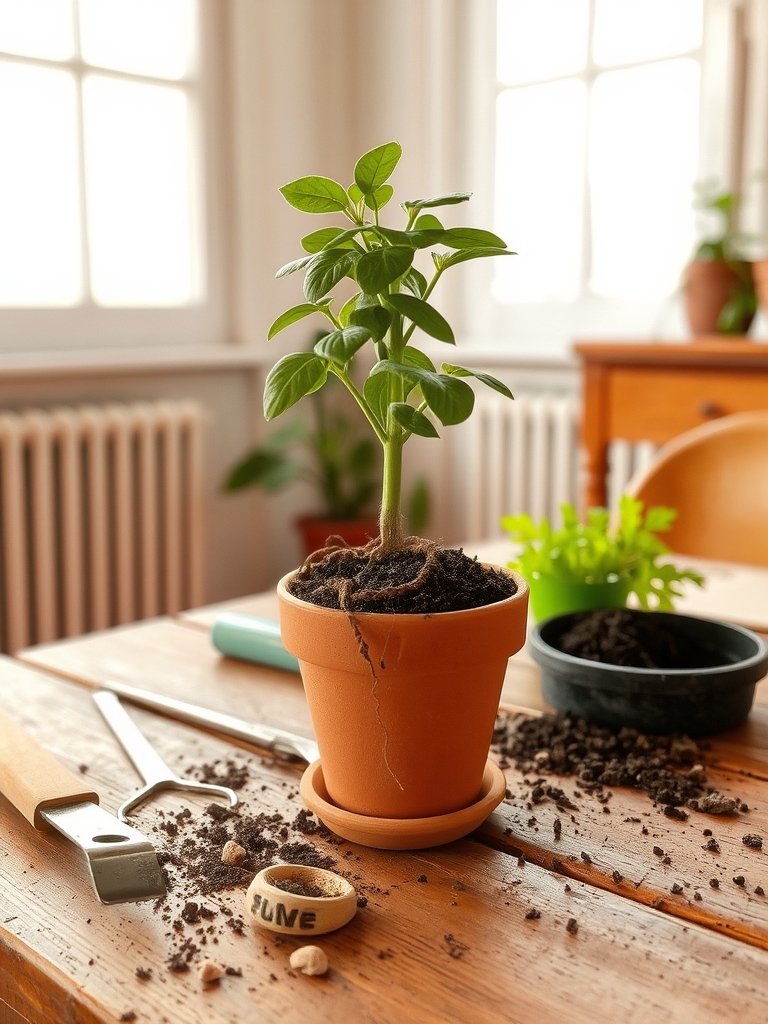
Repotting your plants successfully requires careful planning and execution. Choose a pot that is only slightly larger than the previous one, and use fresh, well-draining soil to prevent waterlogged roots. Handle the roots gently, and prune any damaged or circling roots to promote healthy growth and prevent shock.
Managing Pests and Diseases
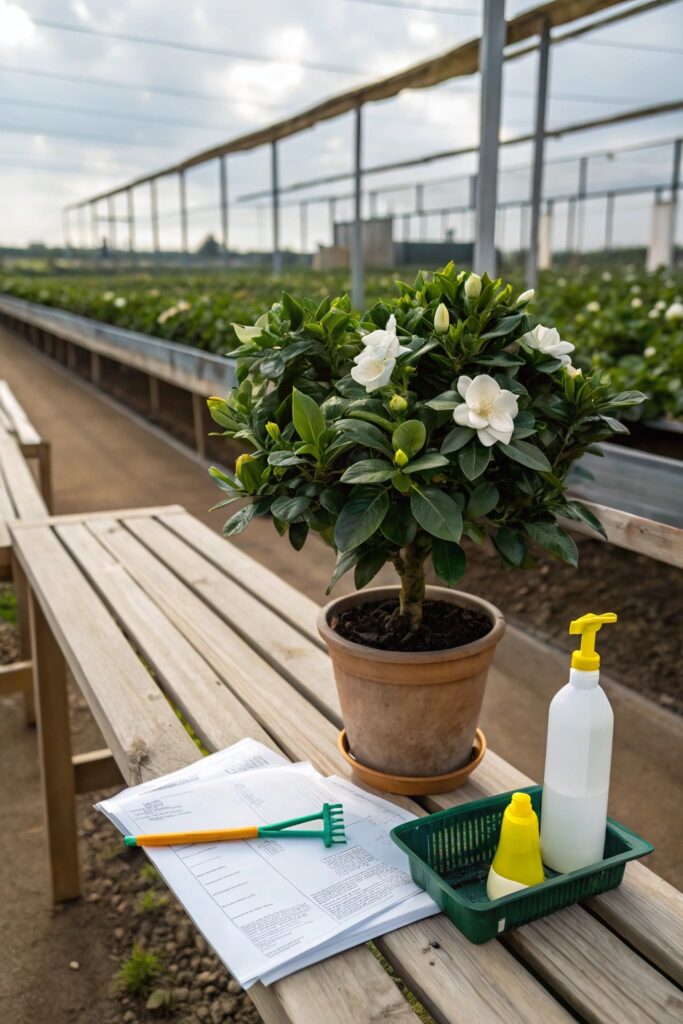
Managing pests and diseases is vital for healthy plant growth. Regularly inspect your plants for signs of infestation or infection, and take action promptly. Use organic or chemical controls as needed, and maintain good hygiene practices to prevent the spread of disease. Isolate infected plants to protect others and guarantee the overall health of your potted plants.
The Importance of Air Circulation
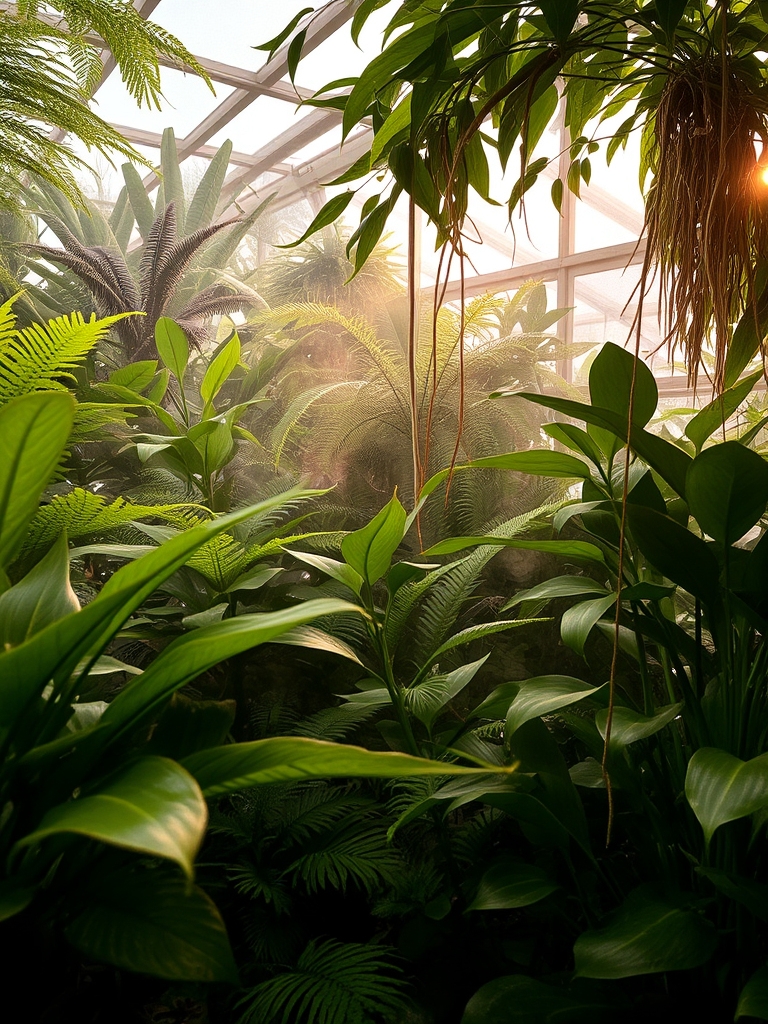
Proper air circulation is vital for healthy plant growth. It helps prevent fungal diseases, reduces moisture buildup, and promotes robust root development. Adequate air movement also assists in regulating temperature and humidity, creating an ideal environment for plants to thrive. This is especially important in indoor spaces or greenhouses where stale air can stagnate.
Using Mulch and Compost Effectively
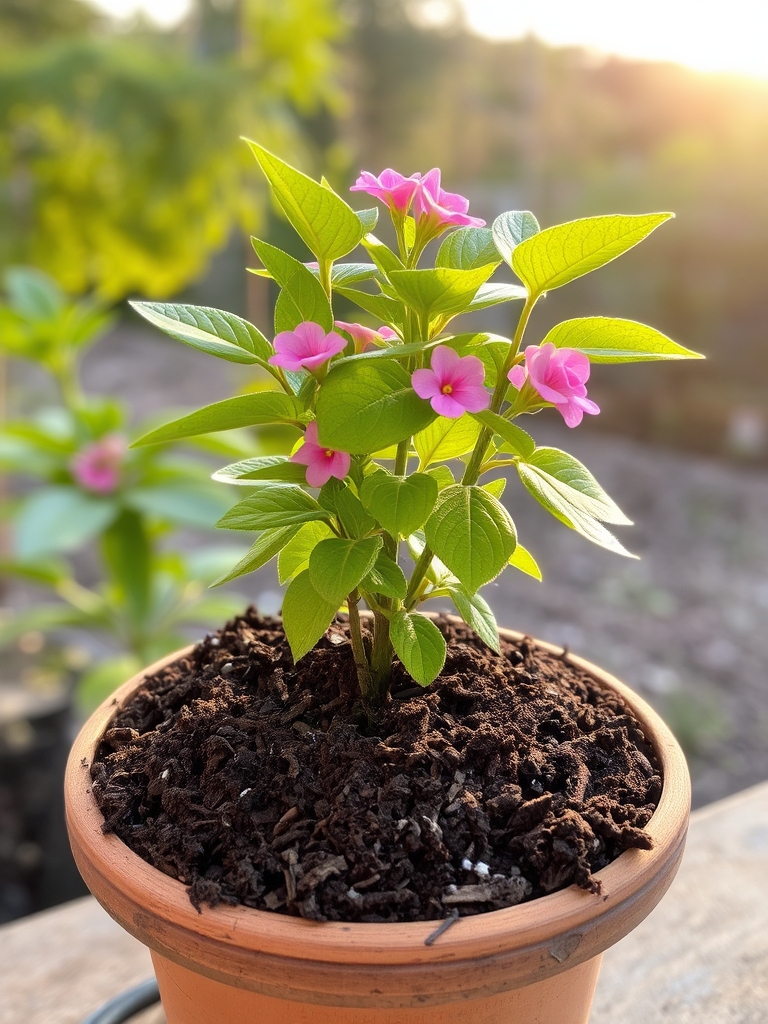
Using mulch and compost effectively enhances soil quality and retains moisture. Mulch regulates temperature, suppresses weeds, and adds nutrients as it breaks down. Compost enriches the soil with essential nutrients, improving its structure and fertility, which promotes healthy plant growth and development in potted plants. Proper application is key to reaping these benefits.
Supporting Tall or Top-Heavy Plants
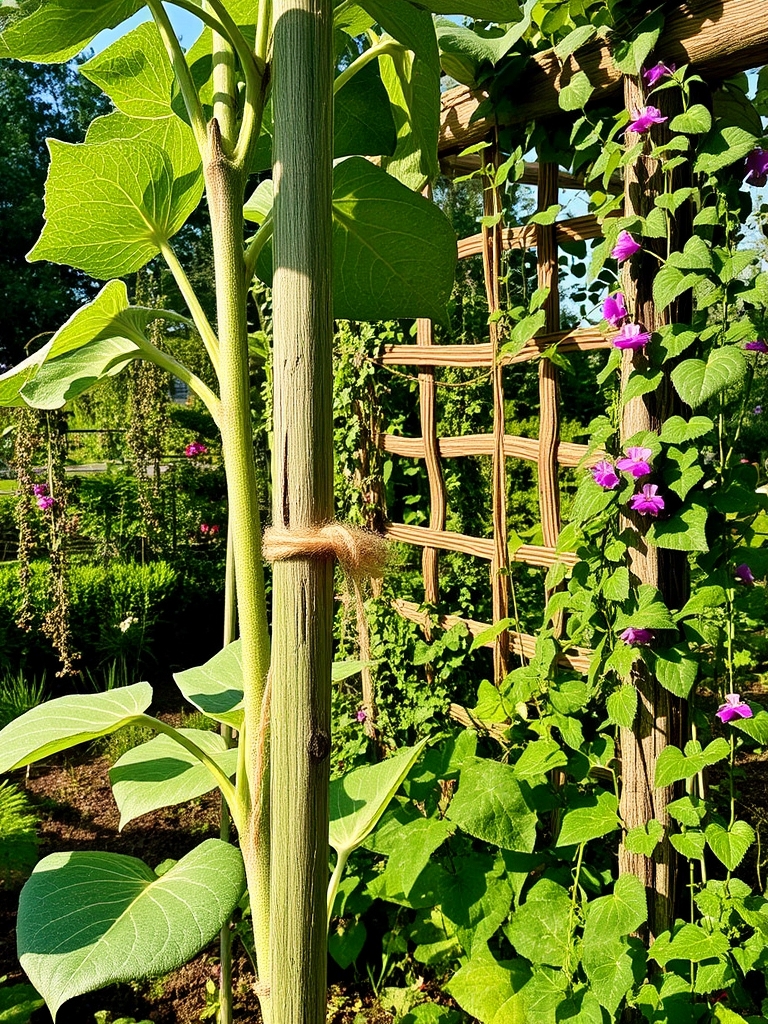
Supporting tall or top-heavy plants requires stakes or trellises to prevent them from falling over. Use soft ties to attach the plant to the support, allowing for gentle movement and growth. Choose a sturdy stake that can withstand wind and weather conditions, and place it carefully to avoid damaging the plant’s roots or stem.
Monitoring and Adjusting Ph Levels
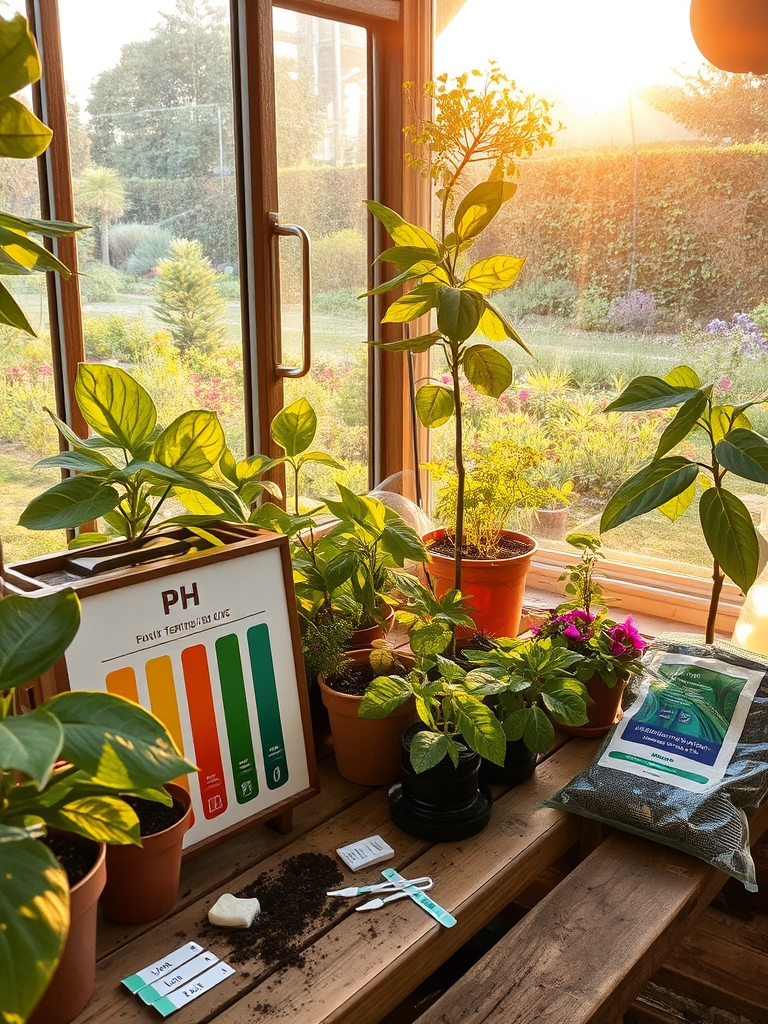
Monitoring and adjusting pH levels is vital for plant growth. Most plants thrive in slightly acidic to neutral soil, between 6.0 and 7.0 pH. Regularly test the soil pH and adjust it if necessary to guarantee ideal nutrient availability and absorption for healthy plant development. This may involve adding lime or sulfur to raise or lower the pH.
Creating a Routine for Plant Care
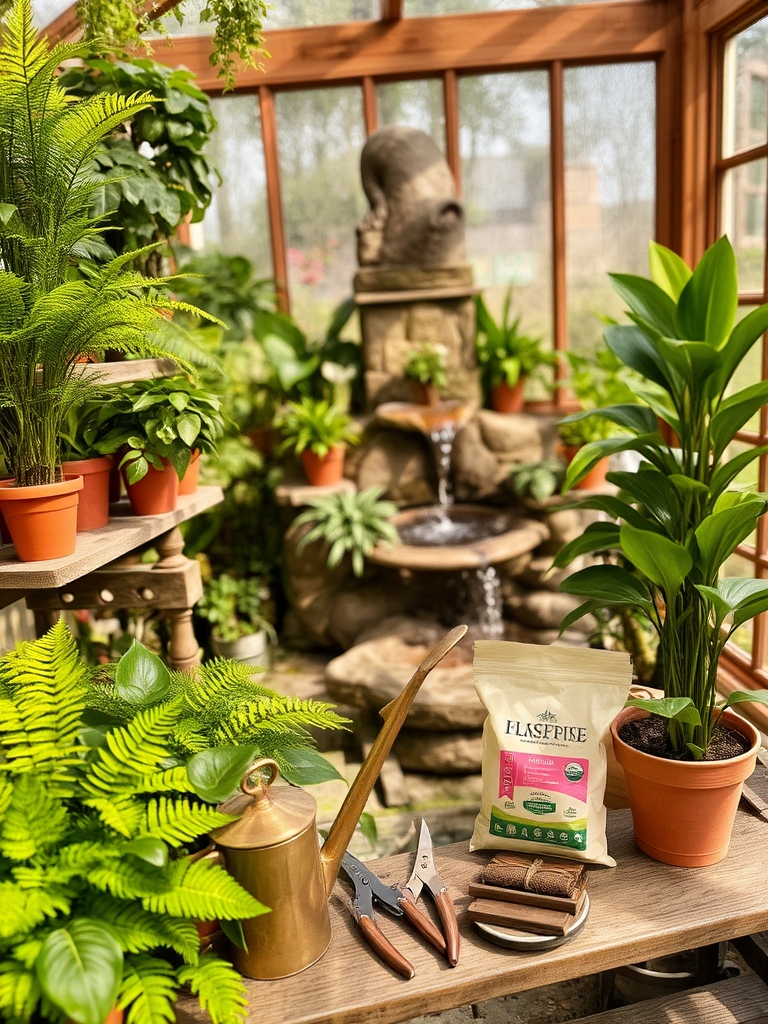
Establishing a consistent routine for plant care guarantees your plants receive the attention they need to thrive. Set a schedule for watering, fertilizing, and pruning to maintain healthy growth and prevent neglect. A routine also helps monitor plant health, allowing for prompt action if issues arise, promoting overall well-being and longevity.
Conclusion
You’ll nurture thriving greenery, bursting with life and color, as you tend to your plants with care. With every watering, fertilizing, and pruning, you’ll coax vibrant blooms and lush foliage, filling your space with natural beauty. Your dedication will flourish, creating a serene oasis that calms the mind and uplifts the spirit, surrounding you with happiness and tranquility.
